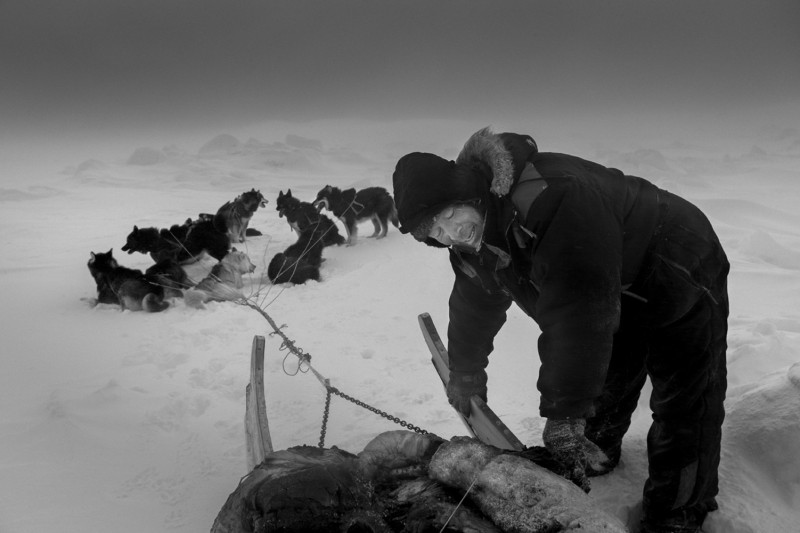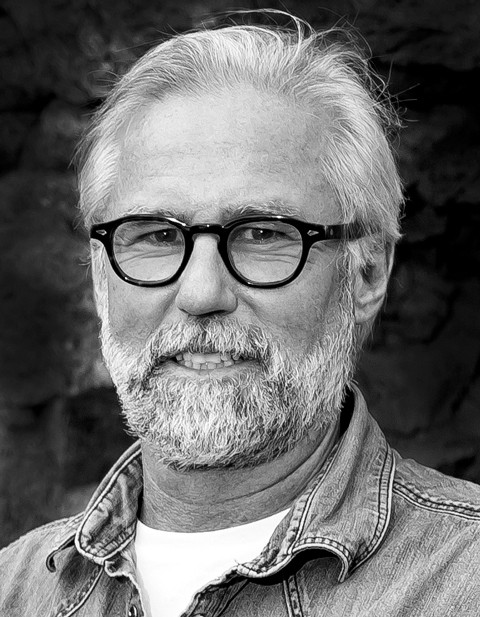Hunting polar bears
Hunting polar bears
Ragnar Axelsson
April 14, 2016

They looked at each other and towards the mountains where the storm was raging. They did not have a long time, the storm would hit us soon. The two brothers decided to go onto the frozen ocean and follow the polar bears. It was a bit scary at times as the ice was moving and very thin near the edge. Running and jumping between icebergs, Hjelmer managed to kill one bear, which represents a huge income for him and his family. It is a sad moment for everybody to see the king of the ice fall, but this is the life of hunters in the Arctic – as it has been for centuries. Hjelmer looked around for the other three bears but could not find them.
While he was running, his extra bullets had fallen from his pocket so we did not have any in the case of the other polar bears attacking us on the ice. Usually they run away, but you never know when hunger strikes. The photograph was taken on the way back home to the village. The storm had already hit us far away from land, and the two brothers where fighting against the storm to reach safety. It took us a few hours to get back to safety from the frozen ocean, and we could hardly see our hands as we struggled back. The storm was raging for a few hours, and the ice where we had been fighting our way back looked totally different from what it had looked like the day before.”
On April 14 there will be an LFI Artist Talk with Ragnar Axelsson in Hamburg. It begins at 7pm at Springeltwiete 4. The public Artist Talk also marks the beginning of the intensive three-day workshop with the Icelandic photographer.
You can see the reportage in LFI 2/2016.
Ragnar Axelsson+-
Born in Iceland in 1958, Axelsson trained as a photographer and soon began working as such for the Icelandic newspaper, Morgunblaðið. Since then he has been documenting the lives of people in the far north. His pictures have appeared in Life, Geo, Polka, Newsweek, Stern and Time Magazine among others. To date he has published three books: Faces of the North (2004, new edition 2015), Last Days of the Arctic (2010) and Behind the Mountains (2013). In 2001 he received an honourable mention at the Leica Oskar Barnack Awards. More

